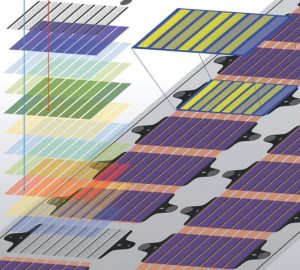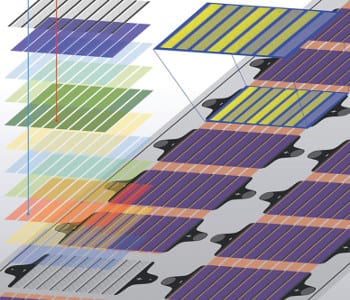 Light-beam induced current or LBIC is a well-established 2D mapping technique for the characterization of solar cells and enables one to obtain a photograph of a solar module showing where it works and where it does not. This electrical image can be used to analyze defects in the active areas of the solar cell that can be linked to their source, i.e. mechanical handling, degradation or errors in the manufacturing process.
Light-beam induced current or LBIC is a well-established 2D mapping technique for the characterization of solar cells and enables one to obtain a photograph of a solar module showing where it works and where it does not. This electrical image can be used to analyze defects in the active areas of the solar cell that can be linked to their source, i.e. mechanical handling, degradation or errors in the manufacturing process.
Until now, LBIC has been a slow method that required electrical contact. In Advanced Optical Materials Frederik C. Krebs and Mikkel Jørgensen (Technical University of Denmark) describe how the method can be changed from being a very slow technique to being an ultrafast technique that does not even require electrical contact.
This enables inspection of solar cells during their manufacture on endless rolls and generally applies to anything from tiny solar cells to fully roll-to-roll processed tandem solar cells with selective mapping of just one of the junctions in the tandem stack.

















